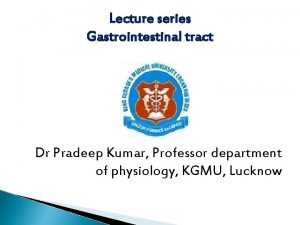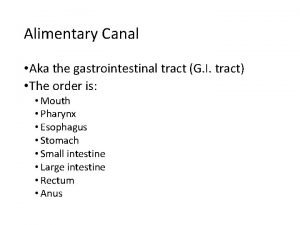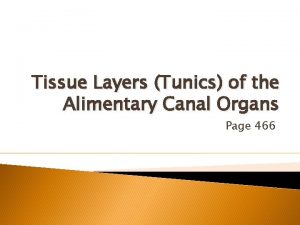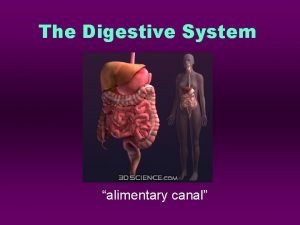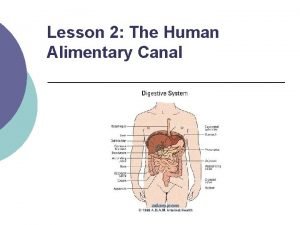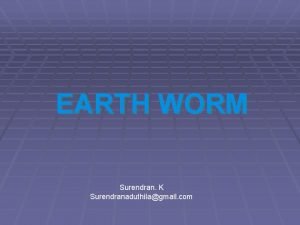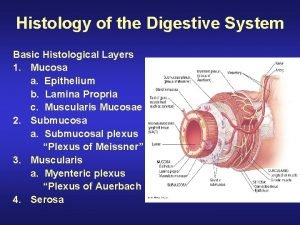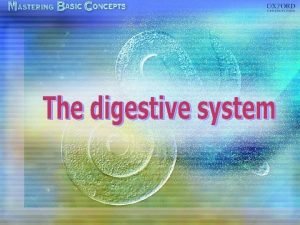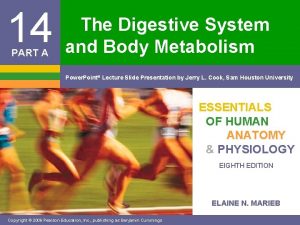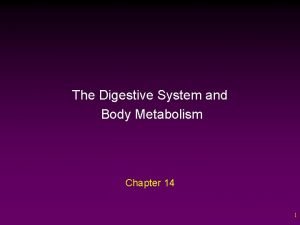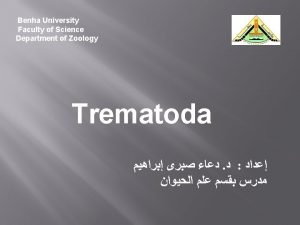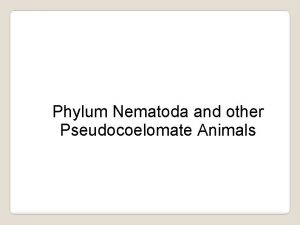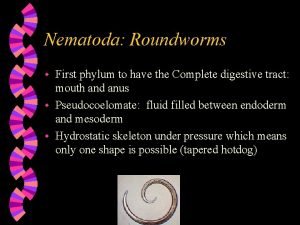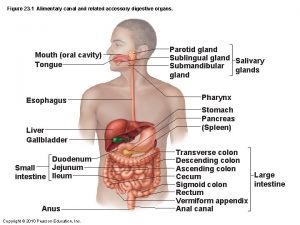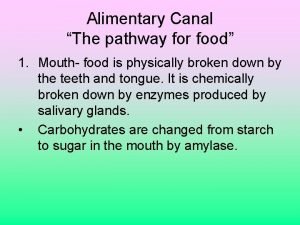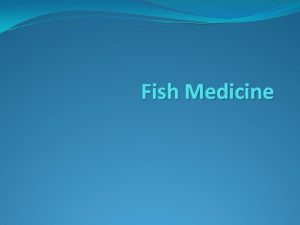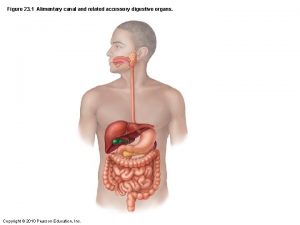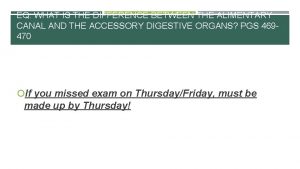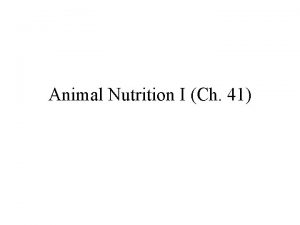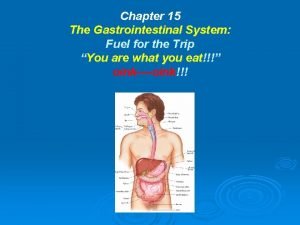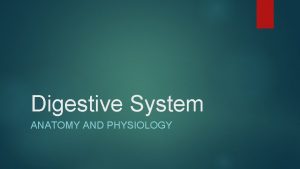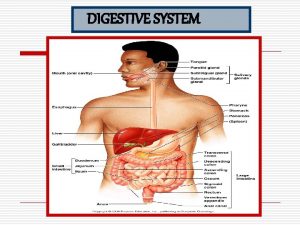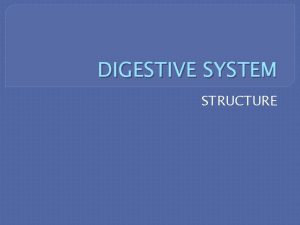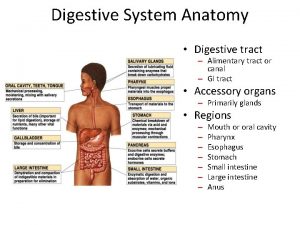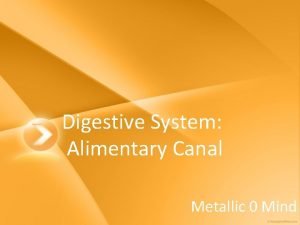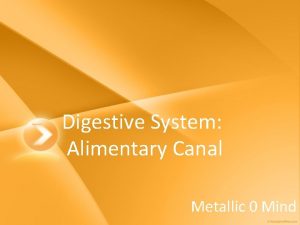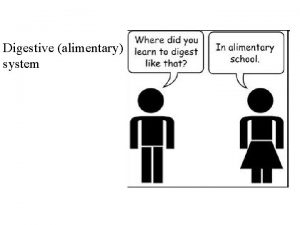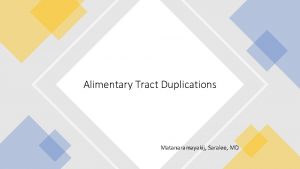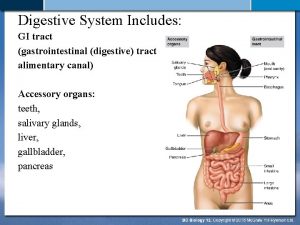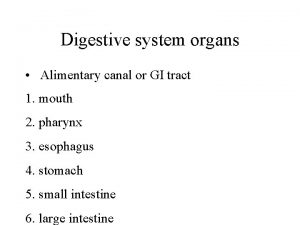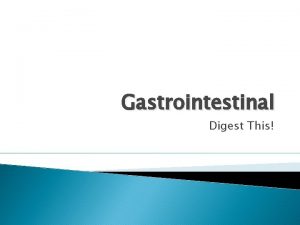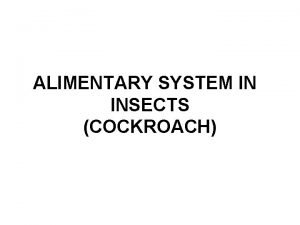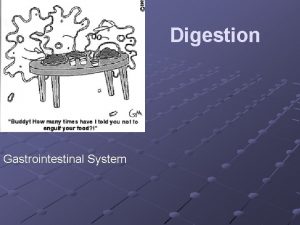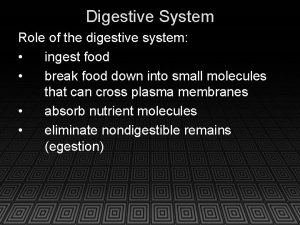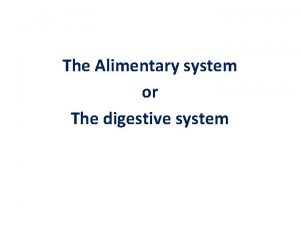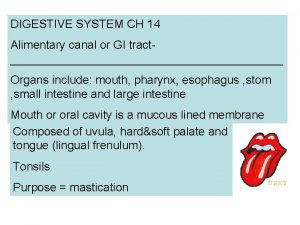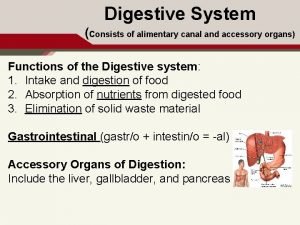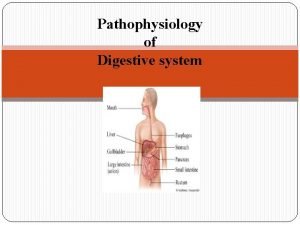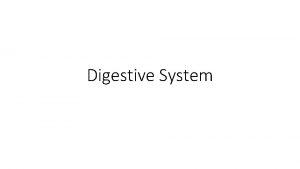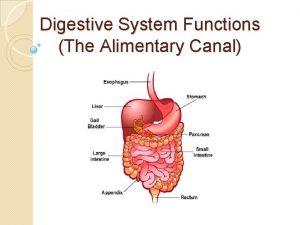Digestive System Gastrointestinal tract or Alimentary canal ingest





























- Slides: 29

Digestive System Gastrointestinal tract or Alimentary canal ingest, breakdown mechanically and chemically, absorb, and eliminate Structures, functions, and nutrition

Gastrointestinal Tract Objectives: students will be able to. . • Trace food from the mouth to the anus • Determine the make-up and function of each structure. • Determine what happens to the food in each structure. • Explain what kind of organic compound is broken down by the enzymes/secretions produced by the structure. • Discuss diseases http: //highered. mheducation. com/sites/0072495855/student_view 0/chapter 26/animation__org ans_of_digestion. html

Mouth • Oral cavity consisting of teeth, tongue, hard and soft palate and salivary glands • FX: – Ingestion – Both chemical and mechanical breakdown of food • Mechanical action allows molecules to become exposed to digestive enzymes • Chemicals/enzymes increase the rate of breakdown into organic molecules – Prepares food for the GI tract • Forms ball of food: bolus • Rough projections on tongue papillae – Aids in handling and contains taste buds for sensory perception • Teeth: mechanical breakdown (grinding)

Mouth

Digestive enzymes/secretions • Salivary glands (3)– lower jaw (submandibular), under tongue (sublingual) and near (parotid) • FX: produces saliva containing…. . • Amylase: breaks down starches • saliva: made of water and mucus to moisten and dissolve – Contains antibacterial lysozyme » Bursitis_: cancer of salivary glands

Pharynx passageway between the mouth and trachea/esophagus and is made up of 3 parts: • Nasopharynx: air • Oropharynx: air and food • laryngopharynx: food – FX: food and air passageway/prevents food from entering the trachea and air from entering GI tract • Respiratory and digestive tracts meet • Tongue will push down on the epiglottis so that the opening into respiratory tract is closed when swallowing

Pharynx

Esophagus • Long (25 cm- 11”), muscular tube wrapped in smooth muscle- first part of the “gut” • FX: FX transport bolus from pharynx to stomach • Peristalsis: wave like motion to move bolus— (5 -10 seconds) • Sphincter: ring of muscle that allows bolus to pass into stomach • Disorders: – Esophageal etresia: missing part of the esophagus – Esophagitis: regurgitates stomach contents – Heartburn: reflux of stomach contents

Peristalsis

Gut Lining • 4 layers of the gut – Mucosa • Mucus membrane and secretes digesting enzymes – Submucosa • Loose connective tissue with blood and lymph vessels – Muscularis • Smooth musclecontractions – Serosa • moisture

Stomach • Found on left side between the esophagus and small intestines – Sac-like organ that’s 10 inches long – J shaped, thick walled – Folds: rugae: increase surface area • Capacity is around 1 gallon • FX: mechanical (peristaltic waves) and chemical breakdown – Alcohol and water absorption • 2 -6 hrs. bolus becomes chyme or thick, soupy liquid • Chyme leaves the stomach through pyloric valve/sphincter

Enzymes and Secretions Gastric juices • Mucus – lubrication/protect stomach lining • HCL (parietal cells): increase acidity of stomach to help pepsin work better (p. H 2) and breaks protein bonds (peptide bonds)/kills bacteria • Pepsinogen to pepsin (chief cells): protein • Gastrin: hormone that regulates muscular contractions and secretions • Intrinsic factor: binds to B 12 to prevent being broken down

Stomach • Parts of the stomach – cardiac – Fundic – body – Pylorus Disorders: • Indigestion and heartburn • Ulcers • Gastritis: inflammation of stomach

Small Intestines

Small Intestines • 18 -20 feet long • Found in between the stomach and large intestines and made-up of finger-like projections/folds called villi and microvilli • FX. : MOST chemical breakdown and absorption of nutrients • Made up of 3 parts: • Duodenum: Duodenum ( 10 “) chemical breakdownpancreatic and liver enzymes/secretions • Jejunum: Jejunum (3 ‘) villi and microvilli- MOST absorption of nutrients into bloodstream • Ileum: ( 6 -7’) some absorption – indigestible material: water, cellulose, and other Segmentation and peristalsis • localized movement increases absorption and mixing • moves indigestible material

http: //time. com/4621074/mesentery-organ-human-body/ New body organ found: mesentery

Enzymes and secretions • Peptidase: Peptidase proteins • Maltase, sucrase, lactase: lactase carbohydrates • Secretin: Secretin stimulates pancreas Small intestines receives digestive enzymes from both the liver, via the gall bladder, and the pancreas

Peristalsis occurs here- (1 -6) • Jejunum and ileum: Contain many tiny, fingerlike projections called villi or folds in the intestinal lining to help with absorption- these folds are then divided into microvillus -Contains many blood vessels for absorption Small Intestines

Accessory organs

Pancreas • Structure made-up of pancreatic islets. Has endocrine (ductless) and exocrine (ducts) functions. • FX: produces digestive enzymes called pancreatic juices that go into the duodenum • Pancreatic amylase: carbohydrates • Pancreatic lipase: fats • Peptidases: trypsin and chymotrypsin and carboxypeptidase's: proteins • Sodium bicarbonate: neutralizes the intestines (p. H of 7) http: //q 13 fox. com/2016/02/03/pos » Pancreatic cancer » diabetes sible-diabetes-cure-being-testedon-small-number-of-patients/ http: //www. mayoclinic. org/diseases-conditions/diabetes/multimedia/blood-sugar/vid-20084642


Liver • Large brown organ(size of football)- made-up of hepatic cells and has 2 main lobes. • FX: produces yellow, bile salts that aids lipase in emulsifying fats. – Bile also promotes absorption of fatty acids and fat soluble vitamins – also responsible for converting glycogen to glucose – detoxification of substances – Produces urea

Disorders of the liver • Hepatitis A, B, and C: caused by a bacterial pathogen (A in contaminated food/water) (B and C- blood)– effect: inflammation of liver/causes jaundice • Cirrhosis of the liver: scarring due to alcohol, drugs, or infections • Jaundice: Jaundice yellowing of skin, eyes, and urine due to increase bile pigments in the blood


Gallbladder • Pear shaped, muscular sac • Located in the depression on the inferior surface of the liver • FX: stores bile from the liver – Bile emulsifies fats Disorders: Gall stones (crystalized cholesterol) can form and block the bile duct

Large Intestine Ascending colon cecum

Large Intestine • Also known as the colon • NO CHECMIAL DIGESTION!!!!!!!!! • 3 -6 feet in length: larger diameter than SI/ 12 -24 hours • Fx: remove water (75%), minerals, salts from the indigestible material and turn it into solid fecal matter-feces – Contains helpful bacteria: breakdown cellulose for energy and also make vitamin K and B – Vermiform appendix is a small projection from cecum: fight infection – Rectum: stores feces

Large Intestines • Peristalsis occurs • Disorders: • Diarrhea • Constipation • Ulcerative colitis: ulcers in lining • Colon cancer: polyps • Crohn’s Disease • Diverticulosis

Anus • The end of the GI tract – Sphincter muscle • FX: expels waste • Disorders: • Hemorrhoids
 Gastrointestinal tract
Gastrointestinal tract Chemotrypsinogen
Chemotrypsinogen Composition of stomach
Composition of stomach Diagram of alimentary canal
Diagram of alimentary canal Alimentary tract and metabolism
Alimentary tract and metabolism Tunics of digestive tract
Tunics of digestive tract 5 parts of large intestine
5 parts of large intestine Human alimentary canal diagram
Human alimentary canal diagram Alimentary canal of earthworm
Alimentary canal of earthworm Digestive system intro
Digestive system intro Histology of digestive system
Histology of digestive system Alimentary canal of mammals
Alimentary canal of mammals Which is not part of the alimentary canal
Which is not part of the alimentary canal Ch 14 the digestive system and body metabolism
Ch 14 the digestive system and body metabolism Phylum
Phylum Nematodes acoelomate
Nematodes acoelomate The first phylum to have a complete alimentary canal is
The first phylum to have a complete alimentary canal is Alimentary canal
Alimentary canal Alimentary canal pathway
Alimentary canal pathway Human digestive system diagram class 10
Human digestive system diagram class 10 Optic lobes
Optic lobes Peristalsis and segmentation
Peristalsis and segmentation Organ system definition
Organ system definition Lacteal function
Lacteal function Gastrovascular cavity vs alimentary canal
Gastrovascular cavity vs alimentary canal Pyramidal vs extrapyramidal tract
Pyramidal vs extrapyramidal tract Rubrospinal tract
Rubrospinal tract Chapter 15 the gastrointestinal system
Chapter 15 the gastrointestinal system Phylum cnidaria and ctenophora
Phylum cnidaria and ctenophora Function of circular folds in small intestine
Function of circular folds in small intestine

